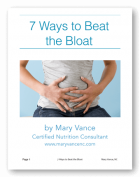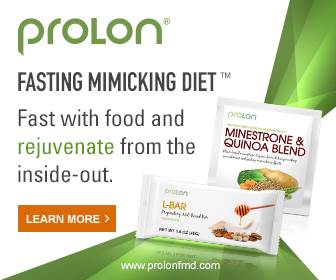Dogs have unique nutritional needs just like humans. And kibble dog food is highly processed and often filled with by-products that aren’t ideal for your dog or even part of his ancestral diet. It’s easy and fun to cook homemade dog food for your dog! But if you do decide to feed a natural diet, there are guidelines to which you must adhere to keep your dogs healthy. Here are some guidelines on a making homemade dog food recipe + a natural diet for dogs.
A Little Background
I have always been an animal lover. Some of my first memories are becoming fast friends with the family dogs, and I don’t remember a time growing up when I wasn’t surrounded by dogs, cats, and later, horses.
By the time I was 5, I had taught Holly (a cockapoo, pictured above) every trick in the book. Eventually I moved on to horses, training and competing them until my early 20s.
Nowadays, I share a home with my primary canine companion, Shaia, my labradoodle (lab-poodle mix), and her boyfriend Chewy, a lab-hound mix.
I’ve had Shaia since 2007 when I got her at 8 weeks old, and she suffered with digestive issues and colitis in her early years (I joked about her having sensitive “poodle guts.”) It’s taken me a while to heal her gut and nail down the perfect diet for her, and I often jest that I am a holistic nutritionist to dogs, having given many of my friends’ dogs “consults” about their ideal diet. Dogs are just as prone as people to leaky gut, food allergies, and dysbiosis.
My interest in animal nutrition began with my Rhodesian Ridgeback, Sadie, who suffered from numerous skin conditions that I later determined were a result of food allergies. Because I wanted to treat her naturally (versus the prednisone the vet was always trying to push), I studied Dr. Pitcairn’s Complete Guide to Natural Health for Dogs & Cats and decided to start cooking for Sadie. I eliminated chicken and switched her to lamb. Lo and behold, her skin conditions cleared up– and quickly! I also found that I could stop giving her flea meds, as she was naturally flea free.
Commercial Pet Food
Animals are no different from humans when it comes to nutrition: feed them crap food, and they’ll degenerate more quickly than on a whole foods-based, nutrient dense diet. Like humans, dogs are subject to diabetes, cancer, arthritis, and digestive issues. I’ve seen owners befuddled when their middle aged dogs start breaking down and needing meds for degenerative issues like arthritis. While some of these issues are certainly due to genetics and breeding, giving pets the most bioavailable nutrients possible for repair and regeneration keeps them healthy and can even reverse early degenerative issues.
Shaia is now almost 15 years old and in great health aside from joint pain that I control with these supplements mixed in with her homemade food.
Much like the conflicting information circulating out there about the best diet for humans, there is a lot of conflicting info about the best diet for your pets. (NOTE: As a “dog person,” I have spent much more time studying nutrition for canines than felines, so I will be focusing on dogs in this post). As with people, there is never a one size fits all approach! Every dog is different and has different nutritional needs depending on size, breed, or health issues. The market is full of holistic pet foods, raw foods, and specialty foods, but what really is the best diet for your dog?
First off, let’s take a look at how manufacturers craft pet foods. They need to create a product that meets accepted levels of various nutrients and the proper ratios of protein, fat, carb, and any other additions they choose to include. Many of the major macronutrients are poor quality, even for the brands that claim protein is the first ingredient; for example, “chicken by-product” is a popular protein source, and canola oil is often used for a fatty acid source.
Poor quality proteins are often not easily digestible, and dogs may only be able to absorb 75 percent or less due to fibrous tissue present. If you happen to take note of your dog’s poops, you may notice the output increases (and stinks way more) if you’re feeding a poor quality food. Like people, dogs should have well-formed stools that don’t stink too badly.
Most notably, processed pet foods are just that– refined and processed, so they’re missing vital nutrients. Most contain antibiotics, hormones, chemical additives and preservatives. Many brands use corn, gluten, and wheat flours as fillers, and they often appear among the first ingredients. These ingredients can cause major skin irritation, itching, and hot spots. Here is part of the label of one popular dry dog food:
Ingredients: Ground yellow corn, chicken by-product meal, corn gluten meal, whole wheat flour, animal fat preserved with mixed-tocopherols (form of vitamin E), beef, rice flour, soy flour, water, meat and bone meal, propylene glycol, sugar, salt, phosphoric acid, tricalcium phosphate, animal digest, potassium chloride, sorbic acid (a preservative), non-fat yogurt powder….
Yuck. I wouldn’t eat that, would you? Then why feed it to your dog? The smell alone in most of the kibble-based dog foods is enough to repel anyone. And the wet food? Though it contains less preservatives, it can make for stinky poops and contribute to tooth decay. So, what to feed your dog?
Homemade Dog Food
Overview
- Mix up the protein sources for variety and so your dog gets a good spectrum of nutrients
- Include organ meats. Liver is inexpensive, and look for heart and kidney too
- You must supplement with bone meal for calcium, or use the dry powder recipe I include below
- Add sea vegetables (like roasted nori or kelp) occasionally for iodine, or use kelp powder
- Feed a fatty acid supplement like fish oil
- Stick to minimal and easy-to-digest fruits like peeled apple, banana, blueberries
First off, I want to bring attention to what you should NOT feed your dog. Do not use the following foods for homemade dog food or table scraps:
- Onions, alliums
- Chocolate
- Grapes, raisins
- Xylitol (VERY toxic to dogs)
- Certain nuts: Macadamia, almonds
- Lemon & lime
- Avocado
- Dairy products: Use caution. Not poisonous per se, but can cause diarrhea
I also recommend avoiding nightshades like red peppers, tomato, potato (sweet potato is OK), and legumes.
Foods to Include on a Natural Diet
- A variety of all types or proteins and organ meats. Salmon and sardines are great anti-inflammatories for arthritic dogs, and are easy to digest. Lamb is good for skin issues; also very digestible.
- Eggs
- Raw meaty bones
- Goat or sheep yogurt, plain yogurt or kefir is OK if your dog tolerates dairy
- High antioxidant fruits like blueberries, apples, banana, melon
- Best veggies are spinach, carrot, sweet potato, any squash, cooked cruciferous
- Sea vegetables like kelp, a rich source of iodine: a 50 pound dogs needs 300mcg of iodine daily (source)
After careful research, I have arrived at a dog food recipe that meets the accepted dietary standards for dogs: about 22 percent protein; 17-20 percent fat; and about 53 percent carb (very rough ratios). Obviously these ratios should change for dogs recovering from illness, older dogs, puppies, or pregnant or nursing bitches. If your dog has kidney issues, you’ll need to reduce the protein.
Homemade diets can be dangerous for your dog if not properly balanced!
I’ve researched raw diets that range from a balanced blend of raw meat, fruits, vegetable and bone to just organ meats, raw meats, and raw bones. Proponents say it clears up skin conditions, allergies, and digestive upset. It’s expensive and not for everyone. If you choose to feed raw, please research it carefully so you can be sure your dog is getting a full spectrum of nutrients. I do NOT recommend feeding meat and bones only— dogs have evolved as scavengers and thrive on a diet that includes a variety of other foods beside meat and bone only. It’s possible your dog can develop deficiencies or become underweight.
My favorite recipe is a combination of cooked meat, vegetables, and bones. Some dogs do okay on grains; others will do better on a grain free diet. I always use only gluten free grains like oatmeal or brown rice. My Ridgeback did great on grain free (helped her skin immensely), but my labradoodle does well with some brown rice mixed in. She doesn’t do well on higher fat and protein (again, neither do dogs with kidney issues).
I also make sure to include a daily dry supplement superfood mix and a daily oil mix. I got the dry supplement mix recipe from the Pitcairn book, and how much to feed will depend on your dog’s size and condition.
The dry powder contains
- bone meal (1.5 cups)
- spirulina powder (1/2 cup)
- brewer’s or nutritional yeast (2 cups), which helps to repel fleas.
- can also add kelp powder to this
- I also save my eggshells and grind them to use when not using bone meal. Mix in 1 tsp per pound of food.
For oil, I use this salmon oil. I have concerns that cod liver oil is too high in vitamin A for dogs.
Benefits of cooking for your dog
- better breath
- healthier skin, coat, no odor (dogs should NOT stink!)
- weight maintenance
- less stinky gas!
- less shedding
- less joint pain
- reduction in degenerative disease
- improved digestive function
- more energy
There are a few different options I note below. You can mix 1/2 the homemade mixture with 1/2 high quality legume-free kibble (I like Fromm and Go! brands, but they contain some gluten free grains) together with the dry and oil mix, OR just feed the homemade mixture with the dry and oil mix. Note that In 2018, the FDA published a warning about the possible link between high amounts of peas, lentils, legumes, and potatoes to canine dilated cardiomyopathy. This condition, also referred to as CDM, results in weakening of the heart. Many grain free dog foods contain high amounts of legumes.
You’ll see the quantities listed below. I also include grain or grain free options. You might want to tinker with grain free if your dog has joint problems, weight problems, or GI issues. If your dog has trouble keeping weight on, try the grain version. OR if your dog is still super gassy on the grain free version, add back some grain. You can also use an egg yolk on top occasionally.
If you’re still not sure about doing the cooking, just use high quality holistic kibble without legumes and mix it together with bone broth, raw or cooked pastured egg yolk, cooked (or raw if your dog likes it) liver/heart, and the salmon oil.
Homemade Dog Food Recipe
(18 cups of this will feed a 60 pound dog for 5-7 days; longer if you supplement 1/2 and 1/2 with kibble)
TIME: 15-20 minutes prep, 3-4 hours in crock pot; about 30-45 minutes in instant pot. If using instant pot or smaller crockpot you’ll have to cut down on the ingredients. I need to halve this recipe to make it in my instant pot.
- 3lb ground beef/bison or lamb (can use ground chicken or turkey if your dog tolerates that). Rotate proteins so your dog gets a variety! Dogs with skin issues do better on lamb and salmon, which is anti-inflammatory. You would need to add the salmon filets later bc they’ll cook more quickly.
- 1lb variety of organ meats (hearts, liver– very inexpensive!)
- 2 heads broccoli
- 2 sweet potatoes
- 1 butternut squash, peeled OR 2-3 cups brown rice or oatmeal for grain option
- 1 bag frozen spinach
- 2 apples or a carton blueberries
- 6 carrots
- Bone broth or chicken broth– enough to cover contents
- You can add chopped parsley, which is good for breath
Directions
- Chop all of the veggies roughly into big 1-2″ cubes.
- Chuck everything in the crock pot; meat on the bottom.
- Cook on 3-4 hours for low. It needs to be quite mushy or it is not digestible. Make sure you check periodically to make sure it’s not drying out. Add more broth if needed.
- For instant pot, add all ingredients, meat on bottom, cover halfway with broth, set to pressure cook for 30-45 minutes; release pressure.
- Wait til it cools, then ladle in Gladware bowls and refrigerate (lasts 5-7 days) or freeze until use (can last weeks). I put it all in the giant bucket that the joint treats come in and refrigerate that.
- When serving, sprinkle dry supplement or ground eggshells and oil over food. A large dog needs about 1 tbsp dry per feeding (I feed twice daily), and 1 tbsp oil mix.
- Add a probiotic once a day. You can also use a digestive enzyme for those with GI issues.
How Much to Feed?
As a general rule, dogs will eat around 2 to 3 percent of their body weight in fresh food daily (use cooked weights for foods that are cooked). You can google your dog’s calorie needs. Large dogs will tend to eat a lower percentage, and small dogs a higher percentage of their body weights. Toy breeds may need as much as 4 to 5 percent of their body weight daily, while giant breeds might eat as little as 1½ percent, or even less. (source)
This means a 50 pound dog will need roughly a pound of food (16 oz) per day, or 8 oz at breakfast, 8 oz at dinner. If your dog starts losing weight, feed more.
NOTES
Transition your dog slowly to homemade dog food, mixing in with his kibble and gradually weaning off the kibble. It could cause diarrhea if not. If your dog is prone to gastric upset like mine, I recommend a limited ingredient diet. That means only 3-5 ingredients. I typically do ground beef, carrot, sweet potato, apple, spinach. Or salmon, brown rice, carrot, blueberry parsley. My dog does not do well with kale.
You can use any leftover veggies you have (unless otherwise specified) and throw them in whenever you make this.
If you make your own bone broth, save the bones. You can throw them in too. You can also cook this in a bone broth and water mix for extra nutrients.
My dog LOVES coconut oil. I feed a spoonful to her as a treat, but you could add that to food if your dog likes it, too. Good for skin and coat and repelling fleas.
If you dog seems to have allergy issues, avoid all poultry and poultry products in kibble. Those guys seem to do best on beef, bison, lamb and salmon. They may do better grain free, too.
If your dog is arthritic, avoid high oxalic acid foods like beets, spinach, sweet potato.
As far as expenses go, this is apparently less expensive than feeding straight holistic kibble, but I haven’t crunched the numbers.
Supplement with raw bones for dental health, and use Primal liver treats.
Please note that I am not a vet, and you will have to make adjustments for your own dog’s needs.

Mary Vance is a Certified Nutrition Consultant and author specializing in digestive health. She combines a science-based approach with natural therapies to rebalance the body. In addition to her 1:1 coaching, she offers courses to help you heal your gut and improve your health. Mary lives in San Francisco and Lake Tahoe in Northern California. Read more about her coaching practice here and her background here.











I was just wondering about this! Thank you for posting such great info.
Blue Buffalo? I would not recommend that brand. It is not as good of a food as people think it is. It is too commercialized and not formulated well. I have heard plenty stories of this brand making dogs sick. I think there are a lot of smaller, less commercialized holistic dog food brands that are a much better choice.
Fair point. I like to include options that are widely available so people can have access. Blue is a better brand than, say, Beneful, if you’re transitioning your dog to a better diet.
any thoughts on verus? i use this…. before i did give my dog beneful. Im trying to give her healthier options. She likes wet food as well and I still use canned food… any suuggestions n something easy to through on top of the kibble instead
Not a huge fan of Verus bc they still use chicken fat and sorghum in their hypoallergenic lamb blend. To replace the canned food, if you don’t want to cook, use the Primal raw meat cubes and crumble 1-2 over her dry food, then moisten with broth. Or sometimes if I’m lazy I’ll just brown some beef and sprinkle it with kelp/sea vegetables/spirulina and top her food with that.
What is the feeding ratio to weight?
My dog is only 4 lbs so I’m thinking I can make this and freeze in small containers and it would last quite awhile.
I mention that 18 cups of this will feed a 60 pound dog for 3-4 days; longer if you supplement 1/2 and 1/2 with kibble, so you could do the calculations to adjust for any weight.
Thanks for the response. Looks like this recipe will make about a months worth of food for my little one! Definitely cost efficient!
Hi,
I just wanted to say thank you for the home made dog food article, it saved my pup from severe skin allergies. He is an English bulldog and would turn pink and break out in hives/bumps and lost most of his hair on his sides, we tried everything, vet, food, baths, allergy pills etc..oh and he smelled rancid too. He hated his food wouldn’t eat it at all so I threw caution to the wind and tried your recipe with no grains and within a week his bumps were all but gone and he doesn’t stink so bad, now his hair is almost grown back and no allergy pills at all and no bumps either. So thank you thank you thank you.
Lavonne and Charlie the bulldog
hi! Just found this on Pinterest, I’m just now starting to cook for my dogs and they love it. I have heard that garlic is not good for our four legged friends though and saw you have it listed as a seasoning to use. Since I’m new to all this not sure if that’s accurate, just wanted to throw it out there
-JL
Garlic is ok (great for fleas); onions are not. You can always leave it out. Thanks for reading!
Hi have 2 male Rhodesian Ridgeback male pups -3+6 months old. Is the recipe standard for all.breeds and ages? Lost our 4 year old ridgeback to cancer recently so want to move dogs over to cooked food. Live on a farm would venison be acceptable instead of beef? Regards
Yes, appropriate for all breeds, but may need adjustments for puppies or older dogs, and always account for your dog’s specific needs.
My 11 year old Scottie was just put on prednisone for lymphoma. It was detected early so she is still healthy. Usually I feed her Fromm Gold grain free weight management and she had been doing super well on it with a bit of chicken breast mixed in, and now I include the broth from bones. She got into some Graham crackers last night and now has diarrhea. i am thinking that caused the diarrhea Not the meds. Going to try your remedy- plus tonight I boiled organic grass fed ground beef for her, but gave her the kibble-going to kitchen now to make some rice. Looking for a bit of feed back. Thanks.
Hello Mary,
Just found your web site and am hopeful you could guide me with cooking for our 9 year old yellow lab, Murphy. He has been diagnosed with Diabetes, which I believe is like human Type 1. I want to provide the best possible healthy food and am willing to cook. I am currently making bison or chicken with either spinach, green beans, peas, broccoli, a hard boiled egg (am only) and either brown or white rice or buckwheat/oatmeal. I do add I am winging it! But need to find menu that is high in protein, low in fat and good carbs. He is on human insulin shots 2 X day. And I am attempting to measure his blood count prior to feeding. I’ve been told not to give supplements as they adversely affect the insulin. Long post to you but am searching for nutritional health for our dog. Thank you in advance for responding. Nancy Lohman
Forgot to mention I give him 1 cup each meal of Blue Wilderness Healthy Beef kibbles in addition to the cooked meals.
I’ve found this invaluable, it’s what I believe too, however a lot of debate on garlic???
I have found raw meat is too rich and I blame this for unstable stools, the cooked diet with excellent quality dry food is best. I do supplement with raw chicken frames or necks which has no detrimental effects on my two shihtzu and Rotti pup.
This is a complete diet I think. So wonderful to see someone along with my vet who agrees on this type of feeding….congratulations!
I use Blackhawk dry food, since changing from cheaper supercoat, my shihtzus have less skin irritation and more energy 🙂
There is a lot of debate on garlic. Onions are obviously an absolute no. I only use garlic during flea season to repel them.
I am so thankful I have found this article I am hoping you can help me save my dogs life i have cancer and live on a very limited income and the extra money I did have I have gone to 2 vets to get opinions on what to do for my part terrier not such other part but she has 2 mass and 1 vet says to remove but will be very dangerous to her age and overweight and another say’s to leave alone but no recommendations on what to feed just said to cut back on feeding.
I want to do what is best for her and I a so worried and know that the stress is not helping me fight my cancer.
Can you please help me and advice would be so much appreciated.
Thank You
Feeding a natural diet is a great way to start! Highly recommend the book I mention in the post.
I have a cocker spaniel and she has gastric issues. I made her a homemade diet similar to this one using chicken. She developed pain while trying to go poop. And loose stools. Took her to vet was placed on antiflamatory med, pain med, fortaflora and Flagel. She was to be given cottage cheese and white rice for 48 hr then add in her Royal Cannin. Vet did an X-ray to make sure she didn’t ingest something that wouldn’t pass. Her pain was over the top and troubling to watch.
After her vet visit she didn’t poop for 3 days and when she did still whimpered. Her return visit to vet he put her on can diet for GI..SHE DOES NOT LIKE IT, I’m thinking she maybe allergic to chicken. She is now itching and licking everywhere. I know the vet will want to put her on an oral med and I just do not want to go that route again.
I would still like to cook for her, try the bison and lamb and bone broth and arcana …as a nutritionist is there anything I can give her to settle her belly down ? I just got her in Jan of this year so I don’t have a history on her she is about 4-5 yrs old
I’m not a vet, so I would recommend consulting with a holistic vet if you’re not happy with the current recommendations. I personally would not feed chicken to a dog with GI issues. Pumpkin is also good for constipation and diarrhea. Make sure you are giving the probiotics and enzymes also. It’s also crucial to balance the homemade diets with proper ratios of protein to roughage.
Can quinoa be used as the grain, instead of brown rice or oatmeal?
I haven’t used quinoa with dogs and might be wary of that. You might do some research to see if others have. I don’t know if the saponins are a problem.
Thank you for your info. It is so helpful i am having issues with my 5 mnth old malamute who ate too many milk bone treats and now has loose stools so i am looking online for remedies? If you can suggest anything that will help my Kona ? Thank you!
This article may help: https://www.maryvancenc.com/alleviate-dogs-diarrhea/
hi – lexee is an 8 yr old yorkie/chihuahua – i just started her on Orijen, 42% protein, 13% fat, she is having loose stools. Is this because the food is not agreeing with her and she needs a lower protein food or does her system have to adjust to the new food……thanks sharron
Hi Sharon, when switching foods you need to slowly integrate the new food with the old food until you’ve switched all the way over, esp if you’re switching to a high protein food.
I have three rescue dogs and and now a rescue cat. I feed freeze dried raw turkey by Bravo, and other times picked up Halo grain free spots stew Whitefish & Salmon recipe. Are these good to feed, I want to do the best for them…. I just noticed under Scruffy left arm an area that looks like a fatty tumor. I was going to take her to see. DR. Johnson, my Vet. Holistic, new Vet I nnow go to. Have u ever heard of Bravo, or Mother’s Kitchen dog food ….and is lamb, or turkey or what enter for dogs? Also, never had a cat, what about a cat?
Hi! I have an 8 week old puppy and was wondering what the feeding guidelines of your homemade diet would be? I am going to do 1/2 acana with half the homemade and add the oil and dry mix.
Nicole, it depends on breed and weight. I didn’t include exact guidelines in the post, but they’ll need roughly twice quantity of the homemade formula over dry. So for my dog who gets 1 cup dry food twice daily, she’d get 2 cups homemade food twice daily. If you’re mixing 1/2 dry and 1/2 homemade, cut the homemade formula in half and the dry formula recs in half. Then adjust depending on how your dog does.
Do you need to peel the butternut squash
I have an 11 year old Boxer that was diagnosed with a fungal infection and kidney problems and has been on several medications, what food do you suggest cuz she’s to the point where she won’t even eat?
Jamie, I would suggest homemade meals for your dog using the guidelines in this post + in the book I mention in the post.
Hi my name is Adelina and my 11-year-old blue nose pit bull, got sick on me 2 weeks ago, the vet told me she has been diagnosed with low blood plateletes.
I changed vets because she had been having constant diarrhea. And they told me that she had no parasites, but it went on for a month and finally after 11-years I decided to finally move on to another Vet. She started to do blood work and stool samples and extays. Didn’t rule out Cancer because she doesn’t see anything, but was concerned with the low platelets. So we have been giving her 5 different pills, one is Perensone , two diarrhea pills, and the other one Azathioprine, I’m at my wits with giving her meds. I have never given her any since I adopted her. 11 yrs ago.
I’m trying to find the best dig food for her, I have spent so much on different kibble food for her, no grain. On any of her fog food. Doesn’t mean that just because you pay a lot of money for dog food its good. Now she is on Taste of the Wild High Prairie, with Roasted Bison & Roasted Venison grain free.
I could go on and on as to what I make for her on the side.
Anyway I’m worried about the whole this with the low platelets
adelina, i don’t know about the platelets, but i would definitely give her a powdered probiotic with her food, possibly bone broth, and some organ meats every once in a while (cooked liver).
How about Nulo puppy food? Is it well balanced?
Never heard of it, but it looks good.
Since it’s all mixed together in the crockpot & divided into bowls, how do you know each serving has an equal amount of nutrients/calories